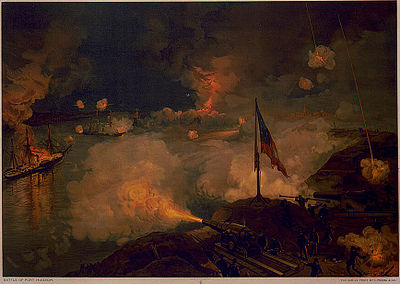 |
| Port Hudson |
After their disastrous attack on Port Hudson, Louisiana on May 27, the Union besiegers turned to a more conventional siege. They established entrenchments and supporting artillery positions. Confederates also strengthened their defenses. They turned mortar shells into improvised land mines, which called torpedoes at the time, and placed them in front of the siege lines. Food was short, and many troops deserted to the enemy. But the commanders still held out hope of ultimate victory.
On June 1st, Nathaniel Banks, Union commander, received reinforcements in the form of nine infantry regiments. He decided to prepare for another assault, and placed 89 cannon to fire on the Confederate works. He would also have the support of the huge guns on board the USS Richmond in the river.
 |
| Garrison quarters |
The guns opened fire at 11:15 am on June 13, 1863. Hoping that the Confederates would be stunned by the huge barrage of shells, Banks halted the cannonade after an hour and demanded the surrender of the garrison. Franklin Gardner, commander of the post, refused, saying, “My duty requires me to defend this position, and therefore I decline to surrender.” The Federals renewed the assault, continuing to fire throughout the night.
 |
| Mortar boat |
The attack was ordered to begin at 3:30 am on June 14, 150 years ago today. But Banks had only given the orders to that effect a few hours before, and the commanders had not prepared for a unified assault. Those troops who did get moving were disoriented by a heavy fog that blanketed the battlefield. Trying again at the same places they had attacked several weeks before, they met the same disastrous results. The Union lost 1,792 men to the Confederate's 57. Banks had proved once again that uncoordinated attacks on strong earthworks could not succeed.






0 comments:
Post a Comment